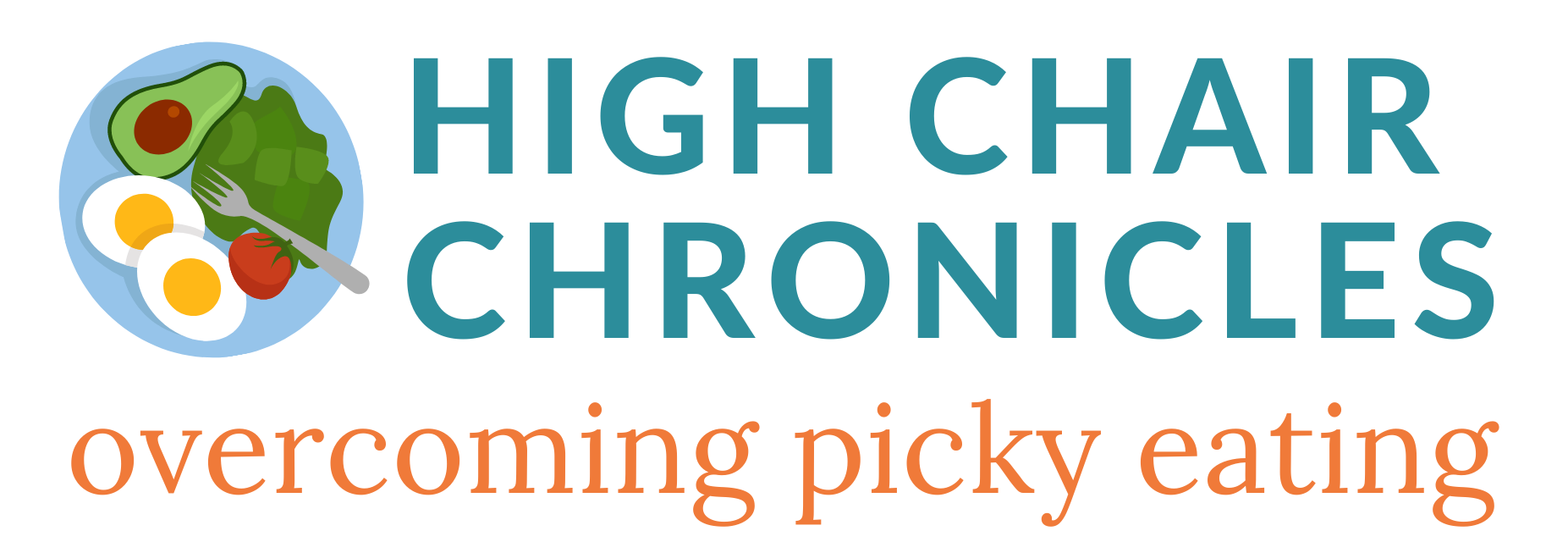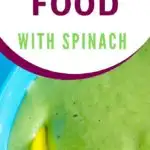Making homemade baby food is a budget-friendly, healthy option for babies and toddlers. This baby food recipe with spinach, banana, and pineapple is a great way to get your little ones to eat more veggies. I include options for how to make this a higher calorie baby food for underweight babies, and give tips on storing homemade baby food.
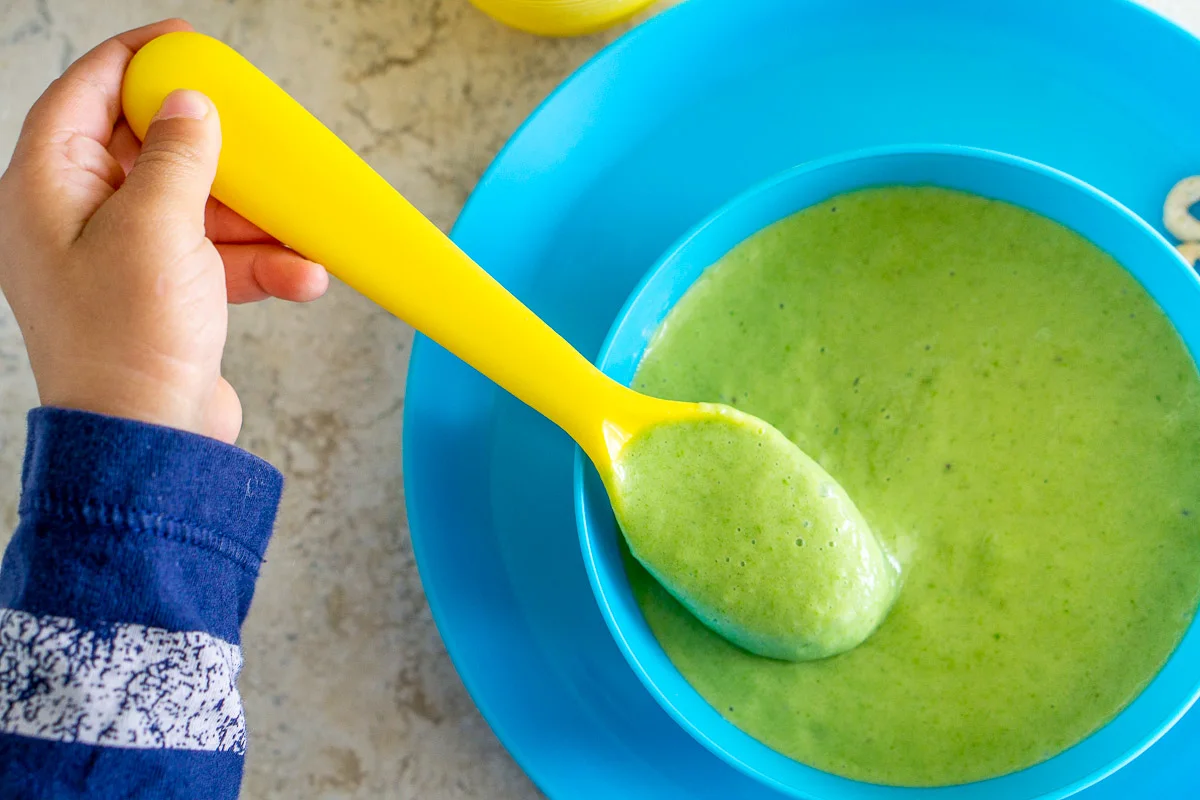
This post contains affiliate links. As an Amazon associate, I earn from qualifying purchases.
I wrote in my blog post about how to make high calorie baby food that I've been making homemade baby food for my son ever since we introduced solids. Now I wanted to share with you the baby food that I make for my son on MOST days: this spinach, pineapple, and banana baby food recipe.
Why make homemade baby food
- Homemade baby food is much cheaper
- Homemade baby food is much fresher - fresh fruit has lots of vitamins, nutrients, and enzymes that are good for digestion
- You can make a wide variety of flavors, which means that you can choose exactly what nutrients you add to your child's food
- You can make it higher calorie, which can be a good option for underweight babies and toddlers (read about our struggle with weight gain as a result of reflux and super picky eating / food aversion)
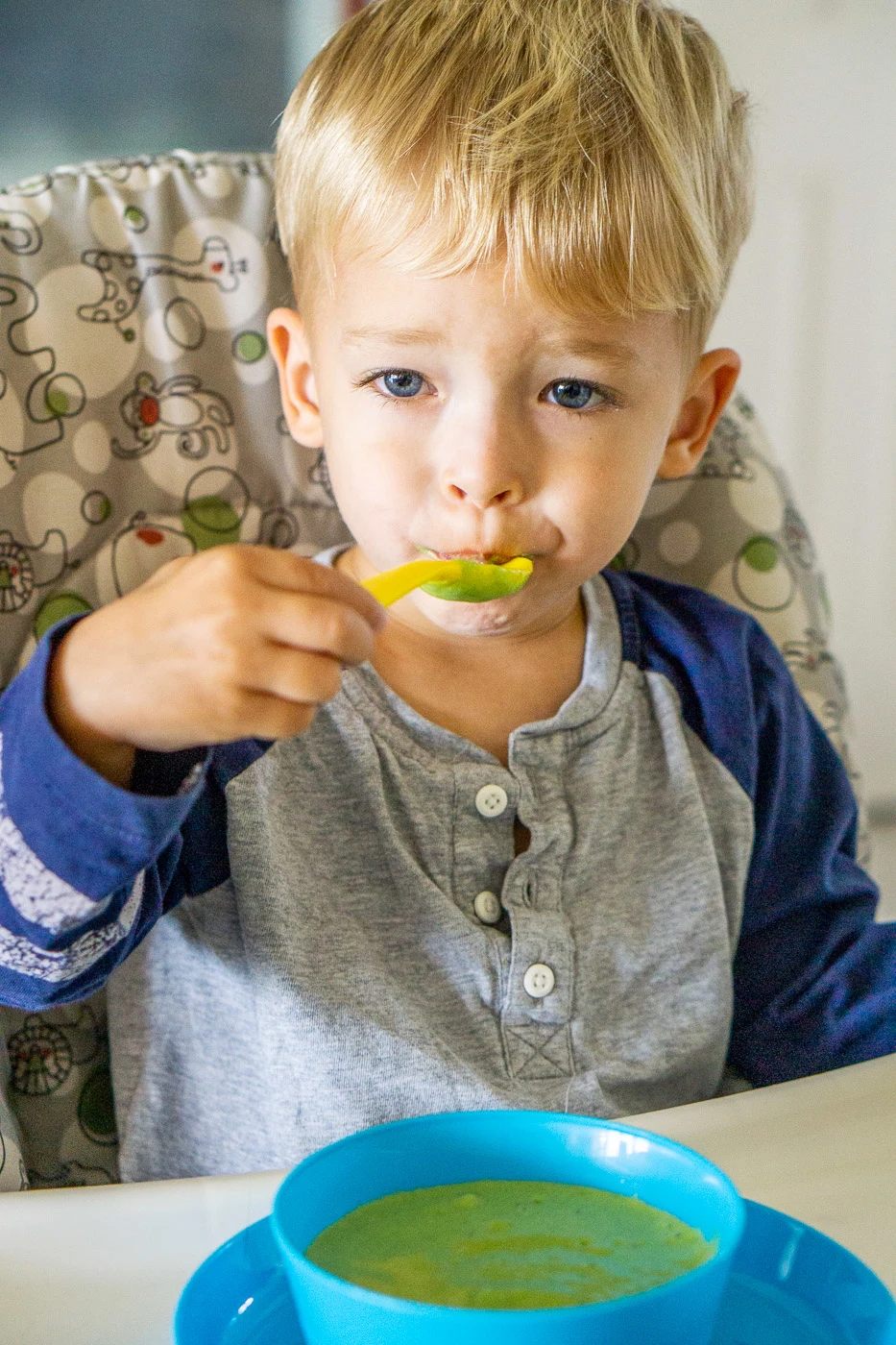
Related recipe: Yogurt Melts Recipe
The ingredients:
All 3 ingredients in this baby food are loaded with nutrients!
- Banana: Bananas are a healthy source of fiber, potassium, vitamin B6, vitamin C, and other nutrients and antioxidants.
- I LOVE using bananas in baby food because they puree so nicely and they are a high calorie food, meaning that my son will get a nice full meal out of baby food made with a whole banana.
- However, they can cause constipation in babies and toddlers with sensitive digestive systems, so maybe avoid this recipe if you are having those issues! Super ripe bananas don't cause constipation as much as firmer bananas (like the one in the photo below.... use a much riper one if constipation is an issue!)
- Pineapple: Pineapple contains a ton of vitamin C, manganese, as well as fiber, thiamine, potassium, folate, copper, and other nutrients. On top of that, it tastes so good and is very juicy, making it perfect to blend with banana, which is thicker.
- I love that pineapple is yellow and makes a lovely color when blended with green spinach.
- Spinach: Spinach is a super food, and one that is hard to get babies to eat on its own! This is why I blend it into baby food. Spinach is a great source of iron for babies (See more foods high in iron.)
- You can use fresh or frozen baby spinach for this recipe. The picture below is frozen baby spinach. I always make sure to have some in the freezer so I don't have to worry about whether I have fresh spinach in the fridge. To freeze spinach, place clean, dry spinach (I use pre-washed organic spinach so I don't have to wash and dry it) in a freezer-safe zip lock bag, trying to keep it flat instead of in one big ball. Then just break off a few pieces when you need it.
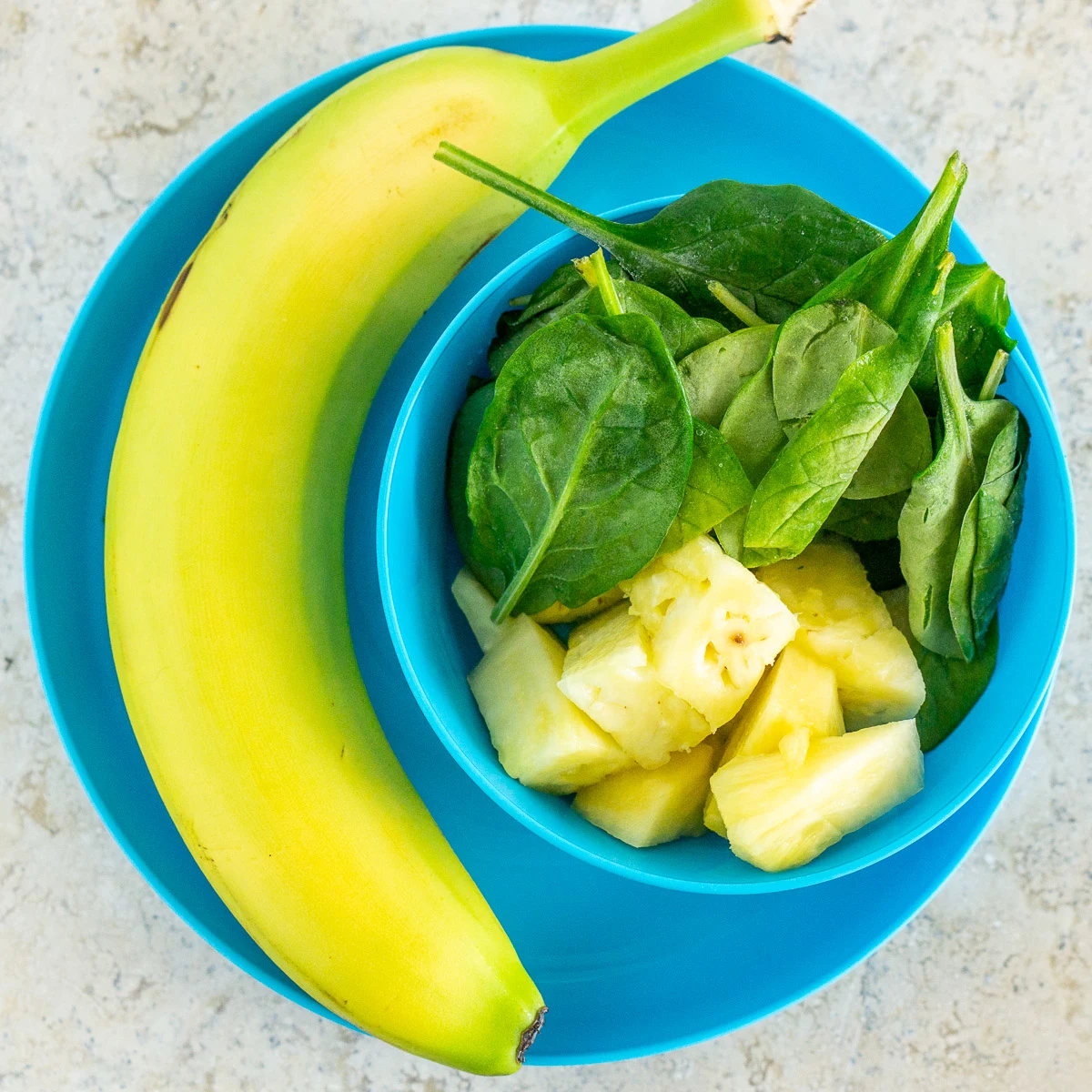
Other ingredient substitutions
I often use mango, strawberries, peaches, or seedless grapes instead of pineapple for this recipe, just to switch up the flavor a bit. Sometimes I add a quarter cup of yogurt instead of fruit. Keep in mind that red strawberries or red grapes will make a yucky brown color when blended. My toddler doesn't mind, and it still tastes great, but it can certainly look off-putting!
Do not use blueberries or papaya in baby food recipes unless you're serving it IMMEDIATELY and your kiddo will eat it all. Both of those fruits have lots of pectin and the baby food will get weird and chunky if it sits out for a few minutes.
The equipment
I *LOVE* my Blendtec blender for making baby food and cooking in general. It is SO MUCH MORE POWERFUL than any other nutri-bullet or other "regular" blender. It blends everything without having to scrape it down a million times and shake the blender, like I have to do anytime I have to make baby food at my mom's or mother in law's house.
If you're committing to making baby food at home, it's definitely a worthwhile investment. You can tell from the smudges in the picture below that it is well-loved in my house. Get it here.

I also use these silicone spatulas to make sure I scrape everything out of the blender into my son's bowl. I don't want ANY nutritious food left behind!
Oh, and these are the cute little bowls that you see in the pictures! They are colorful and fun. My son loves knowing he has his own plates and bowls that are just for him.
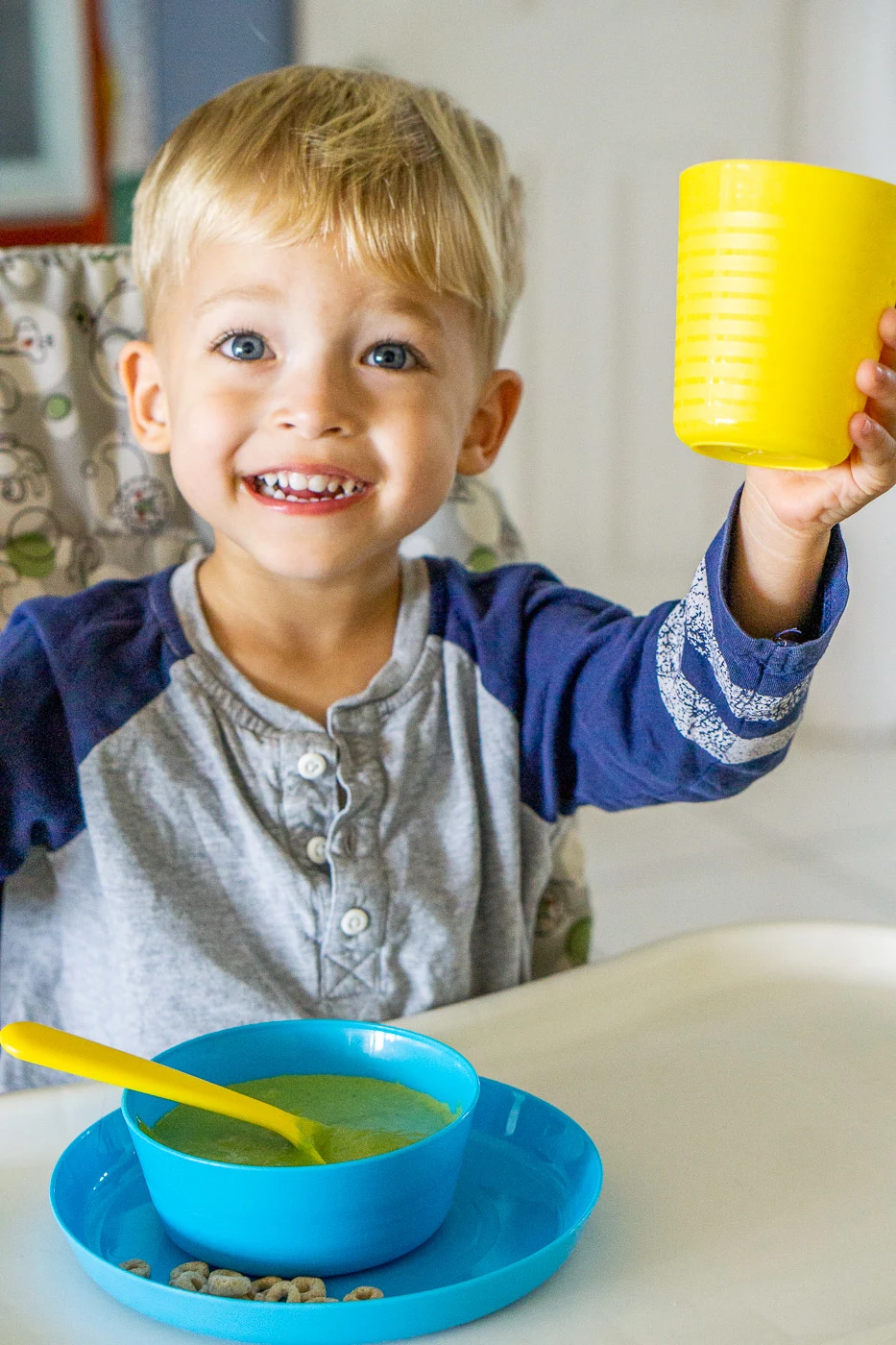
Serving size for baby food
This recipe makes 1-2 servings, depending on how much your baby will eat! At 1 year old, my son wasn't the best eater, and this recipe would be enough for 2 meals for him. Now at 2.5 years, he eats this whole puree in one sitting.
Storing leftover baby food
I store leftover baby food two ways: in reusable baby food pouches (these ChooMee ones! They've lasted me YEARS without ANY spills or breaks EVER), or in small take-and-toss containers with a lid (these colorful fun ones are totally spill proof!).
Homemade baby food will keep int the fridge for up to 2 days, if stored in a sealed pouch or sealed container.

Baby food is not just for babies!
My son has not been a baby for a long time now, but he still has a serving of homemade baby food every day.
I know there is a lot of controversy about pureed baby food potentially setting babies behind in eating skills (compared to eating pieces of food, such as with baby led weaning), BUT if I can get a super nutritious "meal" into my son in the form of baby food and have him eat a quarter cup of SPINACH per day "hidden" in baby food, then I consider that a win.
We still work on trying to eat vegetables and learn to eat better (if you're new here, this blog is about our picky eating journey—my son is an extremely picky eater with texture issues and a bit of oral aversion.. but we are working on it all!). So if I can get one stress-free nutritious meal per day thanks to pureed baby food, I will take it! The rest of the meals and snacks we can work on "real foods"—my son will be fine if he eats some pureed food.
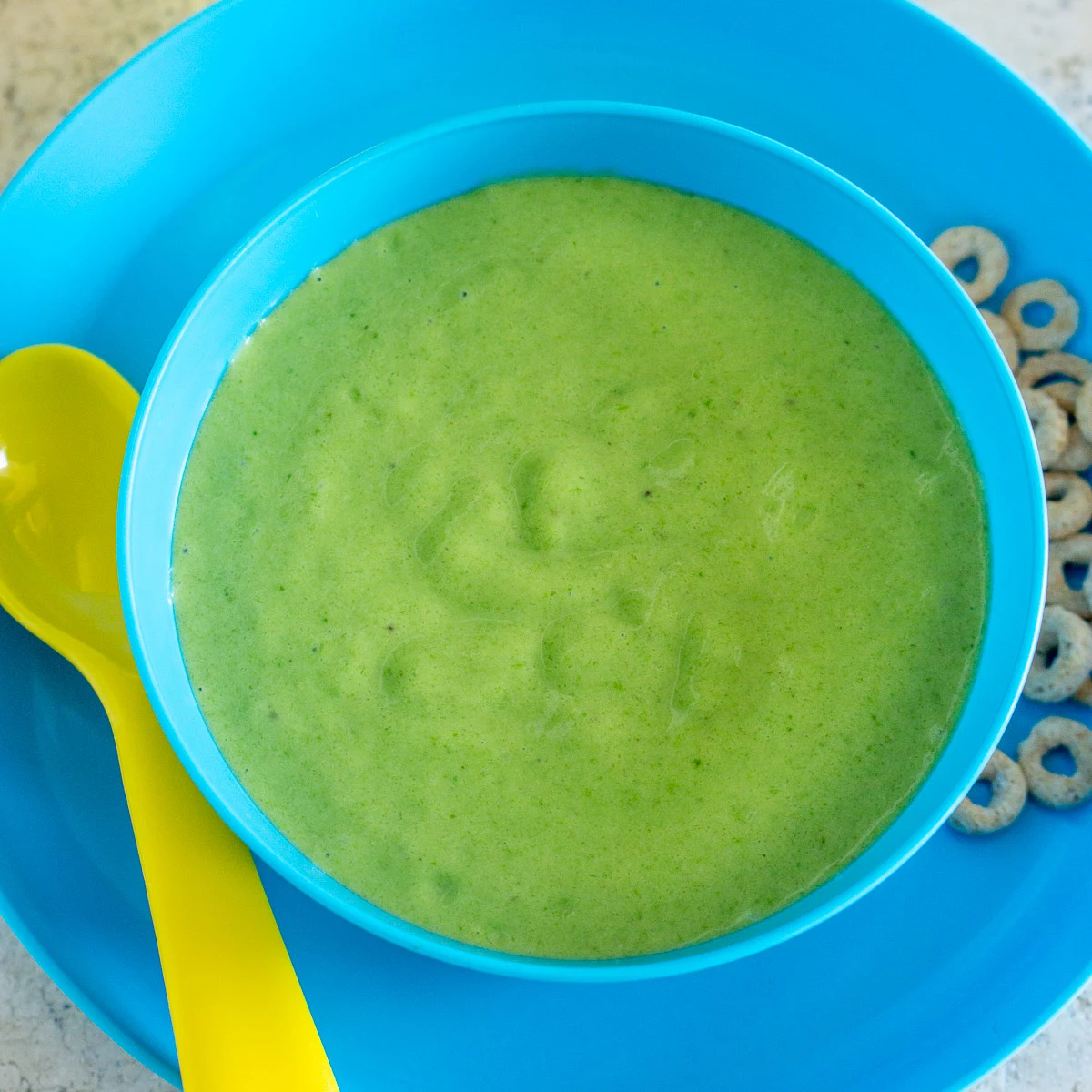
Adding healthy fats to baby food
PLEASE check with your pediatrician about this! Our son was so underweight as a baby and is still very low on the growth chart as a toddler, and our pediatrician gave us the OK to add more fats to his diet. So I always add one of these "healthier" fats into his baby food:
- avocado oil
- coconut oil
- almond butter
- peanut butter
- olive oil (yes, you really can't taste it that much in baby food!)
Obviously, make sure your child is not allergic to any of these ingredients before adding them to their food!
I often use avocado oil because it has a totally neutral flavor. Peanut butter and almond butter are DELICIOUS, but they might taste weight in a baby food with pineapple—it doesn't seem like that would go well together!
Or just skip the oil if your baby or toddler is in a normal weight range and your doctor hasn't said anything about their weight.
Looking for other healthy toddler recipes and mealtime help? Try these:
- 11 Toddler breakfast recipes with hidden vegetables
- 13 Toddler-friendly recipes with hidden vegetables
- How to make high calorie baby food
- Baby feeding product reviews - what worked and didn't work for us
Looking for more resources about picky eating in babies and toddlers?
- Using the nuk brush to reduce gagging while eating
- Feeding therapy for picky eating - how it is helping our son
- 3 Sensory tricks to help your toddler eat
- 20 Ways to get your toddler to eat if they don't want to
- Transitioning from breast milk to formula
Please share this recipe with a friend on Facebook, if you think they might find it useful! And don't forget to save it for later on Pinterest.

Baby Food with Spinach Recipe
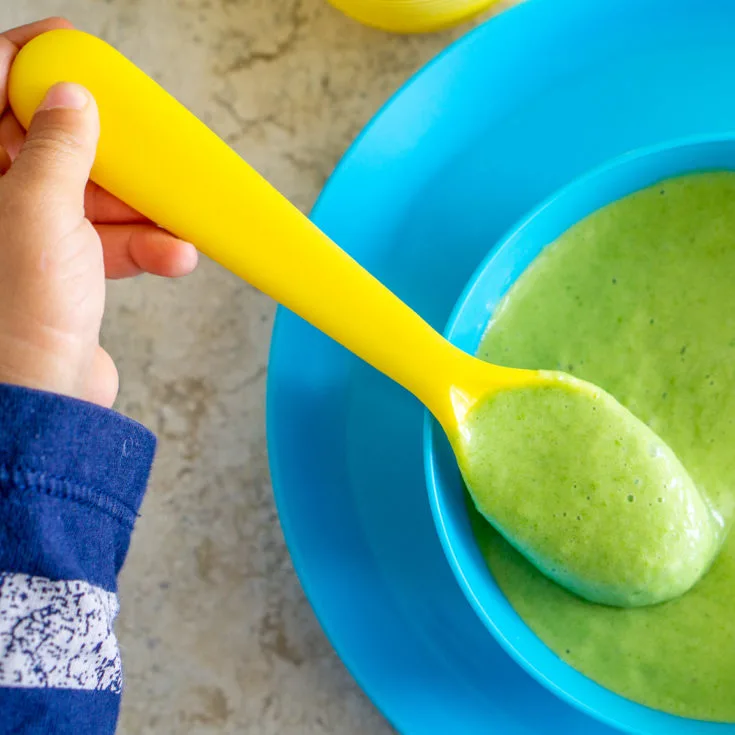
Homemade baby food with spinach! This green baby food recipe is a great way to get your baby or toddler to eat more veggies.
Ingredients
- 1 small banana
- ¼ cup cubed pineapple (fresh, canned, or frozen)
- ¼ cup baby spinach leaves (fresh or frozen)
- Optional: ½ - 1 tablespoon avocado oil or coconut oil
Instructions
1. Break the banana into 2-3 pieces, and add them to the blender with the pineapple and baby spinach. Process until smooth, stopping to scrape down the baby food, if needed.
2. Optional: Add oil, if using, and process for another few seconds until the oil is completely incorporated into the baby food.
3. Serve immediately, or store in a sealed container or baby food pouches (see notes).
Notes
- I recommend using a fresh banana instead of frozen bananas for this recipe because frozen bananas turn brown and get too soft when thawed. But feel free to use frozen baby spinach or pineapple!
- Check with your pediatrician whether you should add oil to your baby food. Most babies don't need high calorie baby food. If your baby DOES need high calorie baby food, I have a whole tutorial with a free printable and lots of recipe ideas here: How to Make High Calorie Baby Food
- These reusable ChooMee pouches are amazing for storing homemade baby food, especially baby food made with banana, which turns brown when exposed to air.
Recommended Products
As an Amazon Associate and member of other affiliate programs, I earn from qualifying purchases.
Nutrition Information:
Yield:
1Serving Size:
1Amount Per Serving: Calories: 121Total Fat: 1gSaturated Fat: 0gTrans Fat: 0gUnsaturated Fat: 0gCholesterol: 0mgSodium: 33mgCarbohydrates: 30gFiber: 4gSugar: 17gProtein: 3g
The nutritional information provided is just an estimate assuming 1 serving and no added oil and will vary based on the actual ingredients you use. If you are tracking nutrition for yourself or your child, check with a nutritionist, dietitian, or pediatrician about whether this recipe is right for you or your child.
